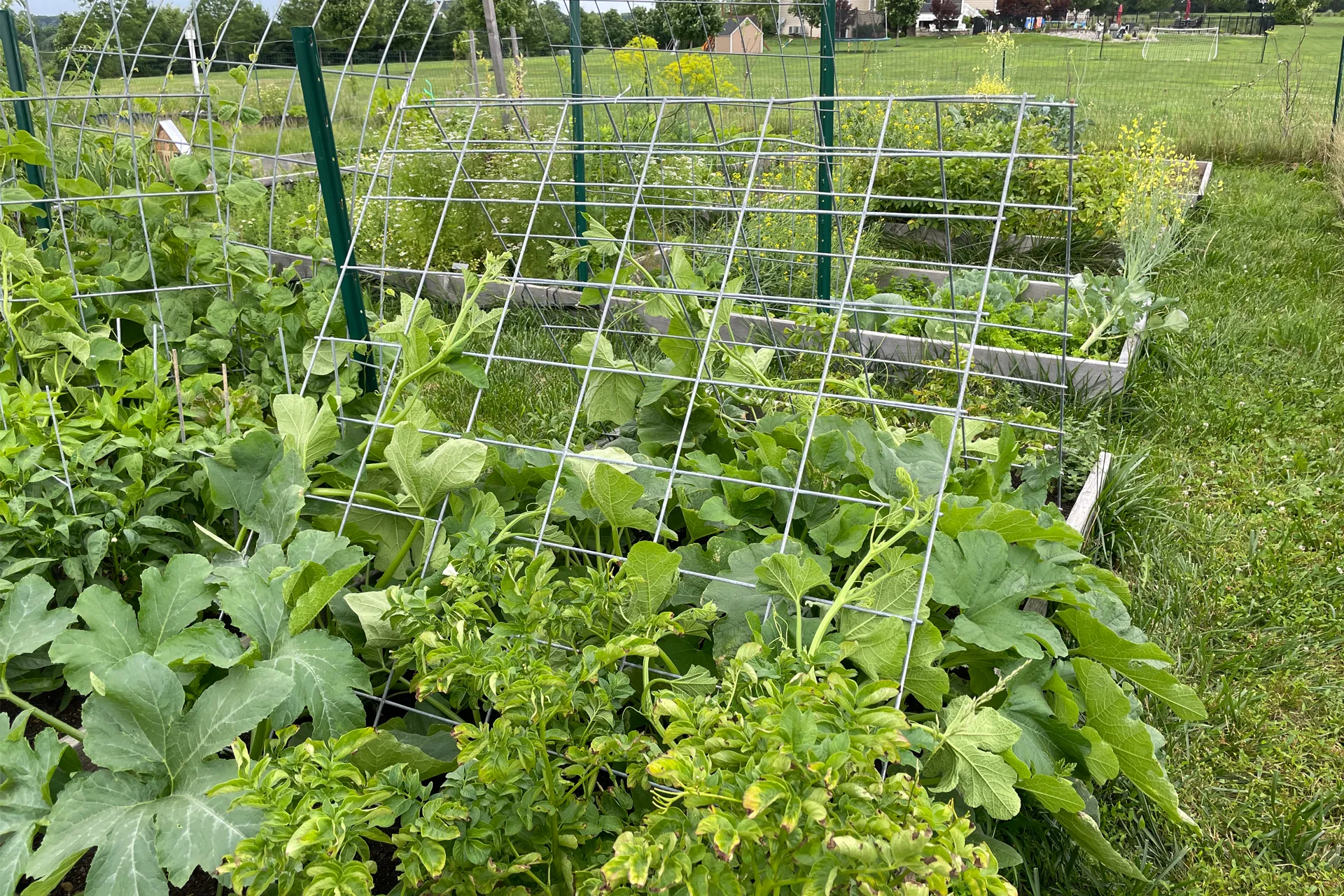This post may contain affiliate links. When you purchase through links on my site, I may earn a commission at no cost to you. See my Privacy Policy for details.
Growing vegetables on a trellis is a smart way to make the most of your garden space. It not only helps save space but also improves air circulation around plants, reducing the risk of disease. Let’s explore a range of vegetables that thrive when trellised, along with practical tips for successful trellising.
Why Grow Vegetables on a Trellis?
Growing vegetables vertically on a trellis offers several benefits:
1. Space Efficiency:
Trellising is a smart solution for maximizing space in small gardens or limited growing areas. By training plants to grow upward instead of outward, you can make the most of your available space. This is particularly advantageous for urban gardeners or those with limited yard space.
2. Better Air Circulation:
When plants are grown on a trellis, there is increased airflow around the foliage. This improved ventilation helps prevent the development of fungal diseases, such as powdery mildew, which thrive in warm, humid conditions. Good air circulation also promotes healthier plants and can lead to higher yields.
3. Easier Harvesting:
Growing vegetables on a trellis makes it easier to harvest your crops. With vines lifted off the ground, fruits and vegetables are more accessible and visible, making it simpler to check for ripeness and harvest them at the peak of freshness. This can save you time and effort compared to searching through sprawling vines on the ground.
4. Improved Plant Health:
By keeping plants off the ground, trellising reduces the risk of soil-borne diseases and pests. Ground-dwelling pests and pathogens have limited access to plants, resulting in fewer issues with rot, mold, and pests. Additionally, trellised plants are less likely to suffer from damage caused by soil splashing onto leaves during watering or rain, further enhancing plant health.
5. Enhanced Aesthetic Appeal:
Trellising adds a vertical element to your garden, creating visual interest and adding a decorative touch. Vertical gardening can be both functional and aesthetically pleasing, enhancing the overall beauty of your garden space.
Vegetables that Thrive on a Trellis
Trellises aren’t just for flowers and vines; they’re also fantastic for growing certain vegetables. If you’re looking to maximize your garden space or keep your veggies off the ground, consider these trellis-friendly vegetables.
1. Cucumbers
Cucumbers are a favorite for trellising due to their vigorous vine growth and abundant fruit production. Trellising improves air circulation and sunlight exposure, leading to healthier plants and higher yields. It also saves space in the garden, as cucumber vines tend to sprawl. Growing cucumbers on a trellis keeps the fruit off the ground, resulting in straighter, cleaner cucumbers that are easier to harvest. The vertical growth makes monitoring and harvesting easier and can reduce the risk of pests and diseases. I love to grow my cucumbers up a cattle panel arch trellis.
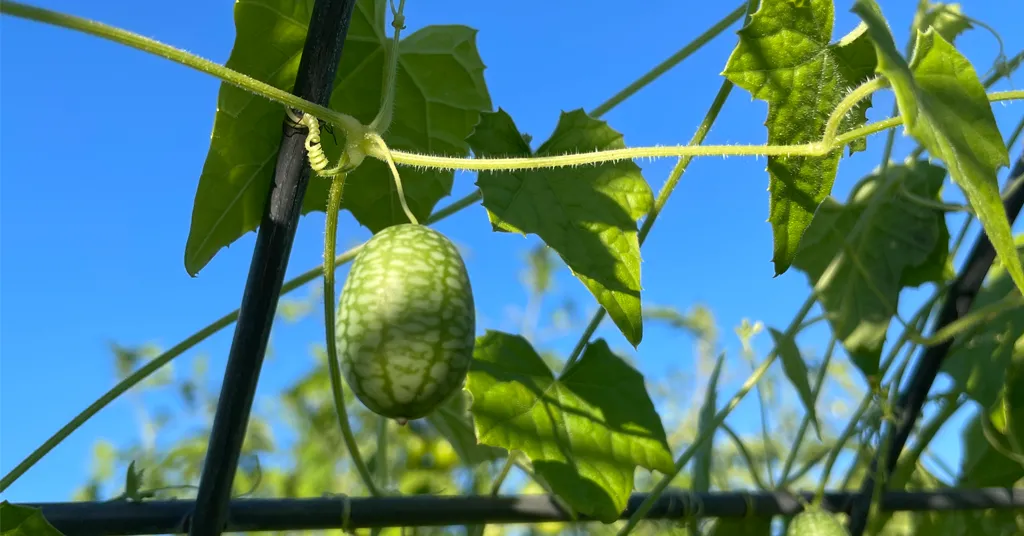
2. Peas
Peas naturally climb, making trellising ideal. There are two main types: shelling peas and snap peas. Trellising saves space and supports healthy growth. It improves air circulation, reducing the risk of diseases like powdery mildew. Trellised peas are easier to harvest as the pods are more accessible. To trellis peas, provide sturdy support and guide the vines as they grow. To trellis peas, simply provide sturdy support for the vines to climb, such as trellis netting, or a pea fence. As the vines grow, gently guide them onto the trellis to encourage upward growth.
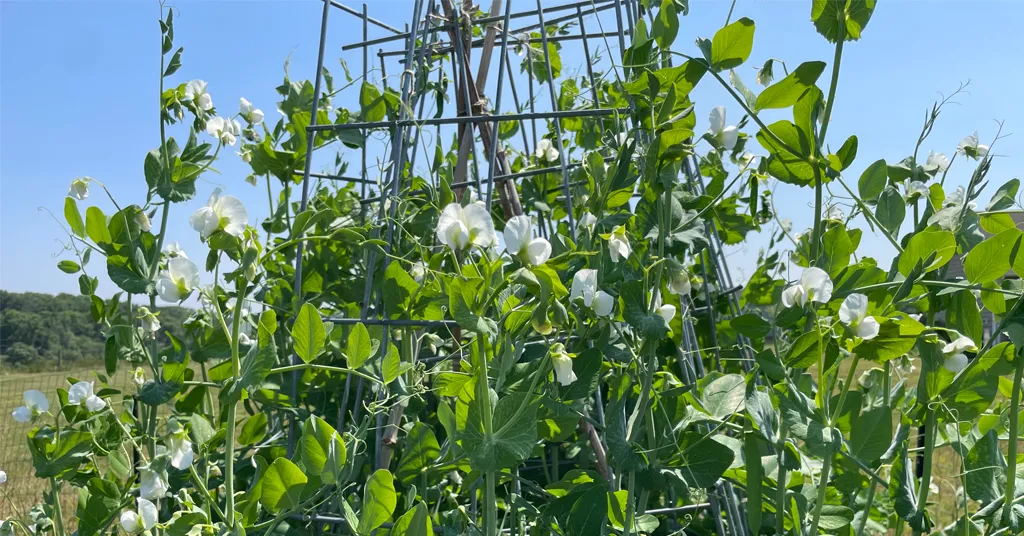
3. Beans
Pole and runner beans are excellent for trellising. It saves space, improves air circulation, and makes harvesting easier. Trellised beans are less likely to become tangled or damaged. Additionally, growing beans vertically reduces the risk of soil-borne diseases. To trellis beans, provide a sturdy support for the vines to climb, such as a trellis netting or a bean teepee. As the vines grow, gently guide them onto the trellis to encourage upward growth.
4. Tomatoes
While tomatoes are typically grown on stakes or in cages, trellising them is another effective method that can save space and improve air circulation. Trellised tomatoes are also easier to harvest and less prone to diseases than those grown on the ground.
When grown on a trellis, tomato plants are trained to grow upward, which helps save space in the garden. This is particularly beneficial for gardeners with limited space or those looking to maximize their growing area.
Trellising tomatoes also improves air circulation around the plants, which can help prevent diseases such as early blight and powdery mildew. Good air circulation helps keep the foliage dry, which is important for reducing the risk of fungal infections. It is also easier to find pests like the tomato hornworm that can impact your tomatoes during the gardening season.
To trellis tomatoes, provide a sturdy support for the vines to climb, such as a trellis netting or a stake. As the vines grow, gently guide them onto the trellis and prune any excess growth to encourage upward growth.
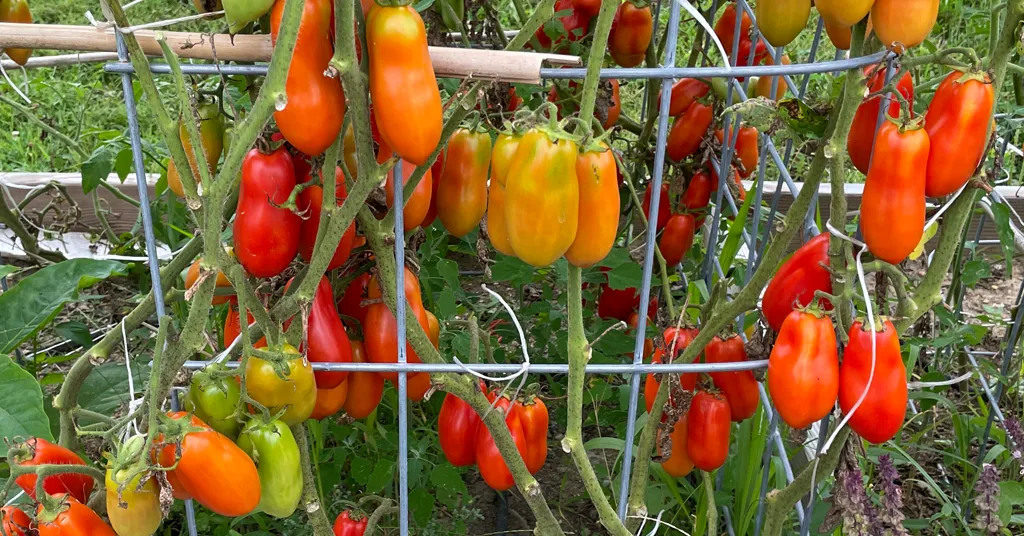
5. Squash
One of the main benefits of trellising squash is space efficiency. Squash plants have a sprawling growth habit and can take up a significant amount of space in the garden if left to sprawl on the ground. Trellising squash can also help protect the fruit from damage. When squash fruits are allowed to rest on the ground, they are more susceptible to rot and pests. Trellising can help support the weight of heavy fruit, reducing the risk of branches breaking under the load.
To trellis squash, provide sturdy support for the vines to climb, such as a trellis netting or a trellis made from wire or wood. As the vines grow, gently guide them onto the trellis to encourage upward growth.
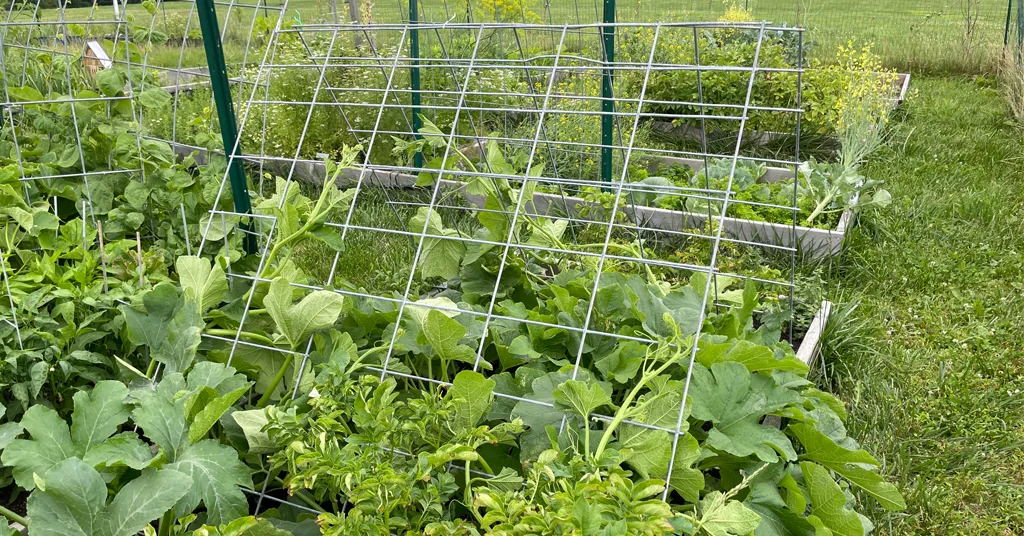
6. Melons
Melons, particularly cantaloupes and small watermelons, can be grown vertically on a trellis with proper support. While not all melon varieties are suited for trellising, smaller or bush-type varieties can thrive when grown vertically. Trellising melons can also help protect the fruit from damage. When melons are allowed to rest on the ground, they are more susceptible to rot and pests. Additionally, trellising can help support the weight of heavy fruit, reducing the risk of branches breaking under the load.
To trellis melons, provide a sturdy support for the vines to climb, such as a trellis netting or a trellis made from wire or wood. As the vines grow, gently guide them onto the trellis to encourage upward growth.
7. Gourds
Gourds, including varieties like bottle gourds, snake gourds, and bitter gourds, can be grown vertically on a trellis with the right support. Trellising gourds not only saves space but also helps keep the fruit off the ground, reducing the risk of rot and pest damage. Additionally, trellising can help support the weight of heavy fruit, reducing the risk of branches breaking under the load.
To trellis gourds, provide sturdy support for the vines to climb, such as a trellis netting or a trellis made from wire or wood. As the vines grow, gently guide them onto the trellis to encourage upward growth.
Tips for Successful Trellising
- Sturdy Support: Ensure your trellis is strong enough to support the weight of the plants and fruits.
- Proper Placement: Install trellises where they will receive adequate sunlight and airflow.
- Regular Pruning: Keep plants tidy and prevent overcrowding by regularly pruning excess growth.
- Watering and Fertilizing: Provide sufficient water and nutrients, especially during the growing season.
- Training Vines: Help vines attach to the trellis by gently guiding them as they grow.
FAQs about Vegetables that Grow on a Trellis
- Can any vegetable be grown on a trellis? Many vining vegetables can be grown on a trellis, including cucumbers, peas, beans, tomatoes, squash, and melons.
- How tall should a trellis be for cucumbers? A cucumber trellis should be at least 5 to 6 feet tall to accommodate their vertical growth.
- What is the best material for a trellis? Trellises can be made from various materials, including wood, metal, and plastic. Choose a material that is sturdy and weather-resistant.
- How do you attach plants to a trellis? Use soft ties, such as garden twine or plant ties, to gently secure vines to the trellis as they grow.
- Can you grow vegetables in pots on a trellis? Yes, many vegetables can be grown in pots and trained to grow vertically on a trellis, saving space and improving airflow.
- How do you prevent vegetables from rotting on a trellis? Ensure good air circulation around the plants by spacing them properly and pruning excess growth.
Trellising vegetables is a practical and efficient way to maximize your garden space and improve plant health. By choosing the right vegetables, providing proper support, and following trellising tips, you can enjoy a bountiful harvest of fresh, healthy produce.

